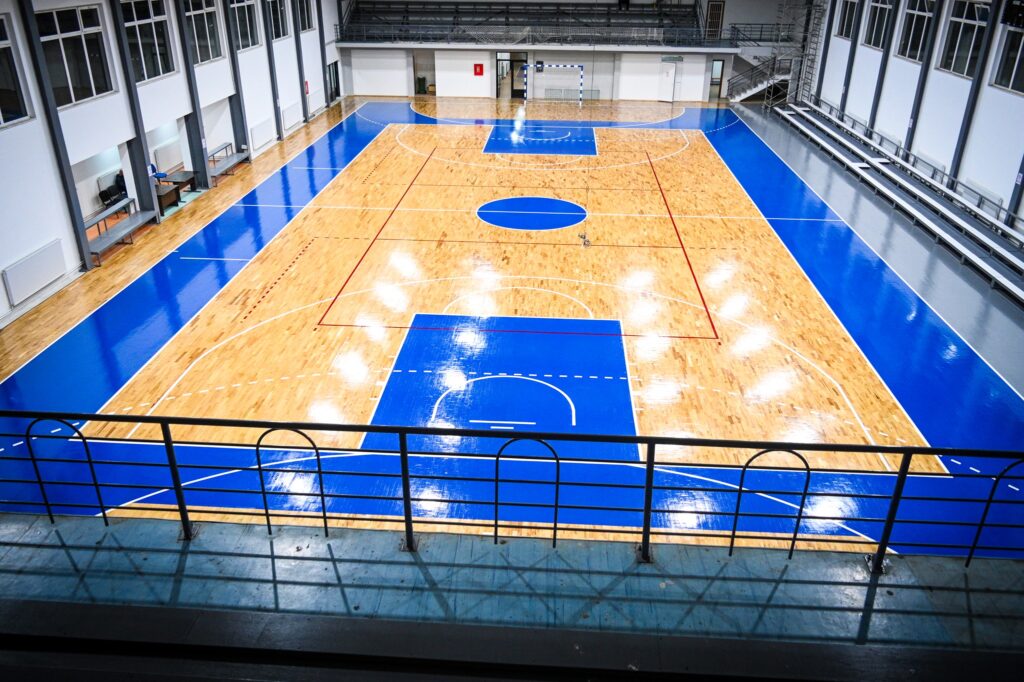Ventana indiscreta (Rear Window)
1989 - Painting (Painting)
116 x 85 x 4.5 cm
Karen Lamassonne
Ventana indiscreta (Rear Window) by Karen Lamassonne takes its title from Hitchcock’s renowned 1954 classic. The painting is part of Lamassinne’s Homenaje a Cali [Homage to Cali] series, developed by the artist in 1989 in a nostalgic attempt to immortalize Cali at a time in which violence from drug trafficking had rendered it unlivable, and the generation that Lamassone had lived it up with had all but dispersed. Lamassone had formally established in Cali around the middle of the decade at a time in which the hangover from the 1971 Pan-American Games and an artistic effervescence had transformed it from a provincial sleepy town into a newly discovered urban (and sexual) labyrinth, one that was fit for the artist’s own explorations around its representation. In the series, Lamassone depicts a gigantic woman in clothing apt for Cali’s warm weather, engaging in different forms of sexual activity throughout the city, including at landmarks, recognizable city locations, and scenes from other films and works of art. Inti Guerrero states that the Cali that the artists pays homage to is the city described by Andrés Caicedo in his mythical novel ¡Qué viva la música! (1971), in which the writer described a city coming of age and the debauchery that came along with it. Lamassone goes one step further and returns to the city she had become (in)famous in a decade earlier when her subtle bathroom watercolors exhibition at the Executives’ Club was prematurely shut down due to protests of its members regarding their inappropriateness with a full-blown sexual scenario. In Ventana indiscreta , one sees the protagonist of this series of cinematic, colorful, and sensual images push back towards a half-naked figure from an eclectic assortment of neighboring buildings. The series condenses many of Lamassone’s interests of the time—it’s a portrait of a city that had been the backdrop of her work and play for two decades, one that saw her own coming of age.
Raised in a multicultural and multilingual environment, Karen Lamassonne has lived and worked in the United States, Colombia, France, Germany and Italy. She started her artistic production in the early 1970s in Bogotá, when she became acquainted with the local arts scene. In the eighties, she moved to Cali where she became the only female member of The Cali Group, an informal collective of film directors, producers and aficionados that included Carlos Mayolo and Luis Ospina. This was a definitive period of her career in which she combined her experience in film making—mostly as an art director but also as an editor and occasional actress—with photography and video, all while her painting continued to thrive from and be nurtured by film, design, theater, and music. In her career as a painter, Lamassonne has represented her surroundings and emotions in which eroticism has been a clear protagonist. Self-portraits are a constant throughout her extensive watercolor production, along with bathrooms, tiles, unruly still lives, and intimate environments. Her creative drive springs from the necessity to communicate sensations and a very personal notion of self-discovery when confronting life’s natural beauty along with its (passionate) experiences. Always looking for the surprising, or what is surreal in the familiar, Lamassone uncovers deeply emotional concerns in relation to memory, life, and death; revealing a sentimental itinerary of dreams and desires that, in retrospect, serve to emancipate her own sensuality and experience of being alive.
Colors:
Related works sharing similar palette
» see more

© » KADIST
Sandra Monterroso
2023Presented as part of a recent group of works titled The Paradox of Healing, Rhombus for Healing No...

© » LENS CULTURE
Living in the Transition - Photographs by Shunta Kimura | Text by Magali Duzant | LensCulture Award winner Living in the Transition Traveling through Gabura Union in Bangladesh, Shunta Kimura documents impact, adaptation, and resilience in his quiet photographs of everyday life on the frontlines of rapid climate change...

© » FRANCE24
Climate activists hurl soup at the Mona Lisa at the Louvre Museum in Paris Skip to main content Climate activists hurl soup at the Mona Lisa at the Louvre Museum in Paris Two protesters from a climate and agricultural NGO hurled soup onto the bulletproof glass protecting Leonardo da Vinci's "Mona Lisa" painting in Paris, demanding the right to "healthy and sustainable food"...
Related works found in the same semantic group
» see more

© » PRISHTINA INSIGHT
Prishtina Named European City of Sports 2024: A Boost for Sports in Kosovo's Capital - Prishtina Insight Home Kallxo Jeta në Kosovë Drejtësia në Kosovë Gazeta JNK Log In Subscribe News Features Opinion Guide Big Deal Archive Follow @prishtinsight Sports Hall/Courtesy of Podujeva Municipality Prishtina Named European City of Sports 2024: A Boost for Sports in Kosovo’s Capital The Kosovar capital has been declared the European City of Sports for 2024, anticipating significant investments in sports infrastructure and activities throughout the coming year...

© » KADIST
Bahar Noorizadeh
2022The Red City of the Planet of Capitalism is part of a three project lineage, following Bahar Noorizadeh’s research on the architecture of the Soviet Union...

© » KADIST
Sebastián Díaz Morales
2012Pasajes I is the first in a series of Sebastián Díaz Morales’s four videos Pasajes , which focuses on a solitary man walking through Buenos Aires...


